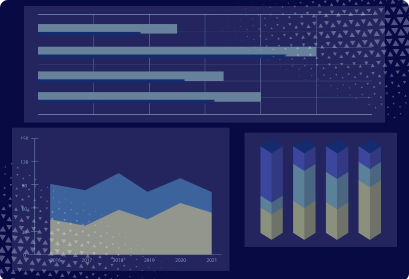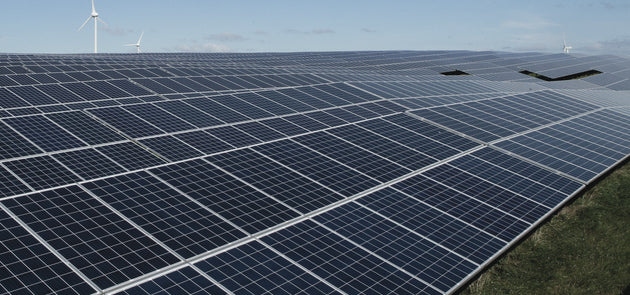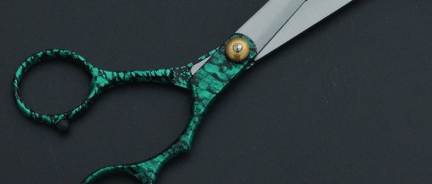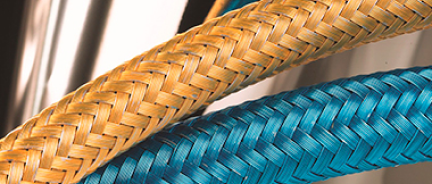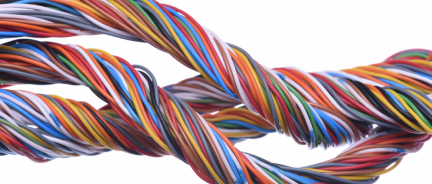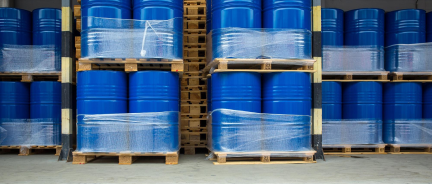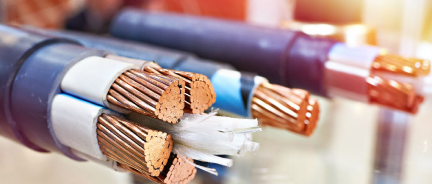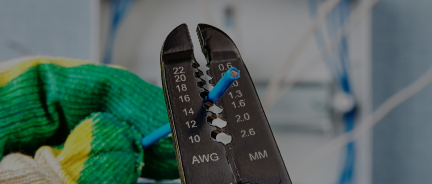Top 10 Data Center Infrastructure Distributors in 2025, From Power Cables to Servers and Cooling
Data centers are a dynamic technological market that continues with dozens of different aspects that help the market grow. This article is an overview of 10 leaders in data centre physical infrastructure, from Nassau National Cable to Prysmian.
Data Center Market State 2025

First of all, let's introduce the overall dynamics of the data center market.
-
The global data center market was valued at USD 269.8 billion in 2024.
-
Global data center capacity is growing at 17.7% annually.
-
11.7% CAGR expected for the sector through 2032.
-
There are 1,189 hyperscale data centers globally as of Q1 2025.
-
Hyperscale operators now control 44% of global capacity.
-
Data centers consume 2% of global electricity.
-
$170B in data center assets are under development or financing in 2025.
-
The estimated global “live IT” capacity in 2026 is 66,504 MW.
-
Wire & cable market for data centers is valued at $20.91B in 2025 total, CAGR 7.94% through 2031.
-
The structured/fibre data centre cabling market is valued at $7.7B in 2025, and is projected to reach $18.1B by 2035.
-
Factors like digital transformation across industries drive the growth of the data center market, the rise of 5G networks, and the growing number of smaller, edge data centers.
-
Based on the component, data center market can be divided into hardware (power systems, cooling systems, servers), data center infrastructure management, software, and services. Our article deals with the companies supplying data centers with hardware.

1. Power Cable Distribution – Nassau National Cable

Power cable distribution is the literal starting point of data center construction. It enables electricity to move from the utility interconnect through conduit and panels to every powered element of the data center, including switchgear, servers, cooling units, and lighting. The power cables used in data centers faced increased strain as they must handle continuous high-amperage loads with minimal resistance. What matters for power cable distribution projects is the ability to supply the right amount of cables when they are required for a project.
Nassau National Cable is a U.S.-based wire and cable distributor headquartered in Great Neck, New York, with over 60 years in the industry. It is one of the most prominent bulk cable distributors in the United States, offering cut-to-length copper and aluminium building wire, DLO, MC, THHN, SER, and URD cable used in feeders, branch circuits, and underground distribution in mission-critical environments. The company has a long experience of delivering custom cables to large-scale data center projects, including xAI, and can fulfil high-volume orders fast.
Nassau National Cable can reliably deliver large volumes of wire and cable fast, which is crucial for data centers where delays in power infrastructure can halt the entire construction timeline.
2. Critical Power Systems – Vertiv

Critical power systems ensure uptime because data centers must remain online 24/7, and that’s only possible with uninterruptible power supplies (UPS), transfer switches, PDUs, and power distribution cabinets.
These systems allow seamless switchover to generators, battery power, or alternate feeds and are essential to tier-rated facilities (Tier III and IV).
Vertiv is the company that offers industry-leading solutions in this space, including its Liebert UPS line, Geist PDUs, and SmartCabinet integrated power and cooling units. It serves hyperscale, colocation, and edge deployments. Headquartered in Westerville, Ohio, is a leading global provider of critical digital infrastructure for data centers. It is one of the few companies that delivers full, integrated infrastructure stacks.
3. Structured Cabling & Fiber Connectivity – R&M

Structured cabling is the backbone of digital communication inside the data center. It routes high-speed data between servers, switches, routers, and edge devices with optical fiber cables. As data centers scale vertically (more racks) and horizontally (more buildings or campuses), low-latency, error-free transmission becomes critical.
Reichle & De-Massari (R&M) is a global leader in modular fiber and copper solutions built for high-density applications. The company was founded in Switzerland in 1964. Its patch panels, MTP cassettes, and Netscale series are engineered for airflow optimization and rapid deployment. R&M emphasises tool-less installation of structured cables.
R&M is a revolutionary name in fiber connectivity, a segment that now underpins everything from AI data flows to inter-campus replication. Their systems (e.g. Netscale) are designed to expand easily without disrupting existing operations of data centers of all kinds.
4. Thermal Management Systems – Schneider Electric

Cooling is one of a data centre's most energy-intensive and operationally critical aspects. As server density and wattage rise with GPU-based systems, cooling must scale as well. From chilled water loops and CRAC units to liquid cooling and aisle containment, thermal management dictates uptime and energy efficiency (measured via PUE).
Schneider Electric is a dominant force in the cooling and DCIM arena, originally from France. Their EcoStruxure Data Center platform integrates cooling hardware, power systems, and control software into a real-time dashboard. Their offerings span in-row cooling, liquid-cooled racks, and scalable thermal control for everything from small edge deployments to 100+ MW hyperscale builds. Schneider builds intelligent cooling ecosystems that improve performance and sustainability. They have a large portfolio of liquid cooling systems (direct‑to‑chip, coolant distribution units, etc.)
5. Compute Infrastructure – Dell Technologies

Servers form the compute layer, basically the “brains” of the data center. They host VMs, databases, applications, AI models, and web services. The ability to scale workloads, balance computing across nodes, and manage power draw efficiently is vital for computing infrastructure. Server selection impacts everything from energy consumption and cooling demand to workload capacity and redundancy.
Dell Technologies delivers rack and blade servers in its PowerEdge line that are optimised for compute density, storage integration, GPU acceleration, and edge deployments. Dell also offers integrated security, remote management, and compatibility across private and hybrid cloud stacks. Its infrastructure is trusted by Fortune 500 enterprises, government agencies, and global cloud operators.
Dell leads the compute layer. Just like other companies on our list here, it offers full-stack compute, storage, networking, software, orchestration, and services in a unified stack.
6. Physical Infrastructure & Rack Systems – Legrand (Raritan, Server Tech)

Racks and cable management systems are essential to the physical organisation of a data center. They support proper airflow, maximize space usage, and house intelligent PDUs and monitoring devices. Good rack design improves cooling efficiency and uptime.
Legrand, through Raritan and Server Technology, delivers high-density server racks, intelligent PDUs, environmental sensors, and cable management solutions. Their hardware is engineered for airflow optimisation, equipment security, and remote control.
Legrand bridges physical infrastructure and intelligent operations, combining robust enclosures with built-in monitoring and control, so teams can manage power, cooling, and access from a single integrated platform rather than stitching together disparate hardware.
7. Electrical Distribution & Switchgear – Eaton

Switchgear and electrical distribution systems are what connect the raw utility feed to everything downstream — including UPS systems, panels, PDUs, and backup generators. This is used to control power pathways. Faulty or under-engineered distribution risks everything from arc flash incidents to catastrophic downtime.
Eaton manufactures low- and medium-voltage switchgear, modular busways, panelboards, and circuit protection devices tailored for large-scale facilities. Its Arcflash Reduction Maintenance System (ARMS), harmonic filtering, and remote trip diagnostics are widely adopted in high-resilience designs. Eaton also offers predictive maintenance software and power quality analytics.
Eaton designs its low‑voltage switchgear with clear segregation between compartments (breaker, bus, cable) to reduce the risks of arc faults propagating and to isolate failures. They also offer arc‑resistant and arc‑quenching features in many of their designs. Eaton embraces “smart/connected” switchgear: integrating sensors, IEDs (intelligent electronic devices), relays, and meters for real-time data and predictive maintenance.
8. Enterprise & Industrial Network Cabling – Belden

While fiber dominates long-haul and backbone runs, copper cabling still powers the access layer from patch panels to switch uplinks and control systems. In short- to mid-length deployments, copper provides fast, secure, EMI-resistant connections for both data and power (PoE), especially in mixed-use or rugged environments.
Belden is an industry authority in shielded copper cabling, Cat6A/Cat7 structured systems, and industrial Ethernet applications. Its products are the gold standard of signal integrity, low crosstalk, and consistent performance under thermal and mechanical stress. They are a leading manufacturer in this realm.
9. Liquid & Immersion Cooling – Iceotope

Traditional air cooling becomes less common as data centers adopt AI, HPC, and dense GPU clusters. Liquid and immersion cooling reduce reliance on airflow and allow for high-density compute inside smaller spaces, with greater energy efficiency and hardware longevity.
Iceotope delivers chassis-level immersion cooling and direct-to-chip solutions that dramatically reduce PUE and cooling overhead. Their sealed, fanless systems are beneficial in edge deployments and in geographies where heat or humidity limit air cooling.
Iceotope is at the frontier of next-gen thermal design with exciting innovations on solving problems that conventional systems can no longer handle. They deserve the place on this list for the innovation they bring to the table.
10. Fiber Manufacturing & Backbone Infrastructure – Prysmian Group

Long-distance data transmission depends on backbone fibre, which forms the infrastructure connecting data centres across cities and continents. This includes metro rings, submarine cables, and intra-campus fiber loops that must support ultra-low latency and massive bandwidth.
Prysmian Group is the largest global producer of optical fiber, submarine cable, and high-voltage energy lines. It supplies hyperscale cloud providers, telecom carriers, and data centre operators with fiber systems built to exacting standards for speed, durability, and bandwidth.
Prysmian builds and maintains the physical foundation of global connectivity at a larger scale than any other company does. Its backbone capability is the most impressive among its peers.


